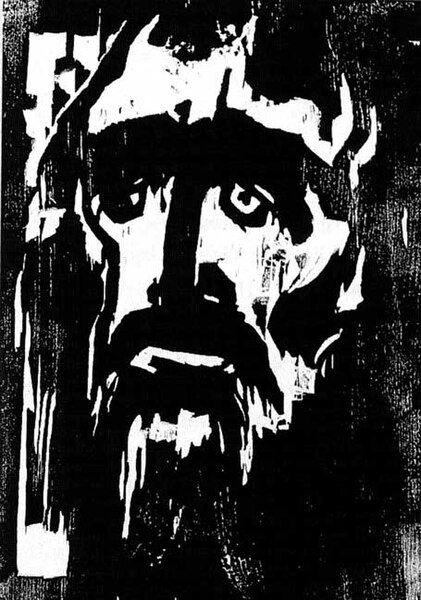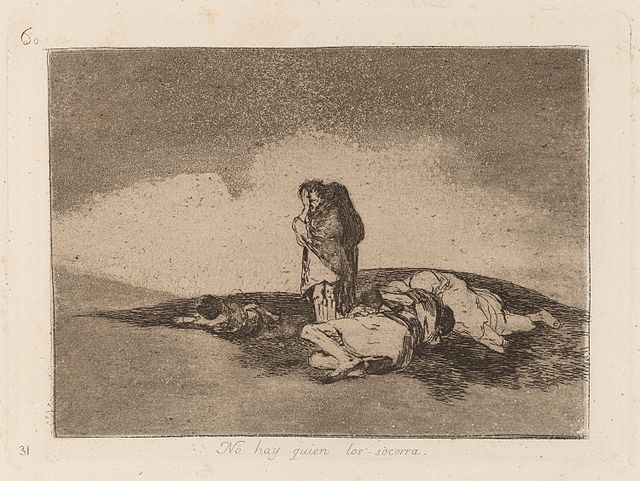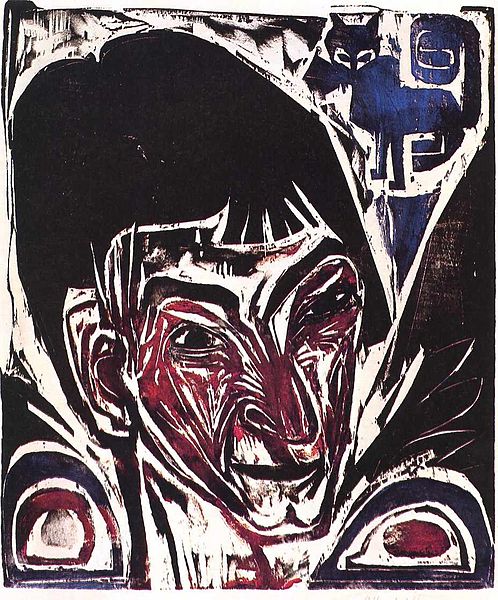Emil Nolde was a German-Danish painter and printmaker. He was one of the first Expressionists, a member of Die Brücke, and was one of the first oil painting and watercolor painters of the early 20th century to explore color. He is known for his brushwork and expressive choice of colors. Golden yellows and deep reds appear frequently in his work, giving a luminous quality to otherwise somber tones. His watercolors include vivid, brooding storm-scapes and brilliant florals.
Nolde in 1929
"South Sea Islander" South Sea Islander (Südsee-Insulaner II), lithograph in colors, on wove paper, Brooklyn Museum, 1915.
Photo of the Degenerate Art Exhibition in Haus der Kunst visited by Goebbels with two of Nolde's paintings (hanging left of the door), in Feb. 1938.
"The Prophet," woodcut, 1912.
Printmaking is the process of creating artworks by printing, normally on paper, but also on fabric, wood, metal, and other surfaces. "Traditional printmaking" normally covers only the process of creating prints using a hand processed technique, rather than a photographic reproduction of a visual artwork which would be printed using an electronic machine ; however, there is some cross-over between traditional and digital printmaking, including risograph.
Katsushika Hokusai The Underwave off Kanagawa, 1829/1833, color woodcut, Rijksmuseum Collection
Rembrandt, Self-portrait, etching, c. 1630
Francisco Goya, There is No One To Help Them, Disasters of War series, aquatint c. 1810
Ernst Ludwig Kirchner, Portrait of Otto Müller, 1915








